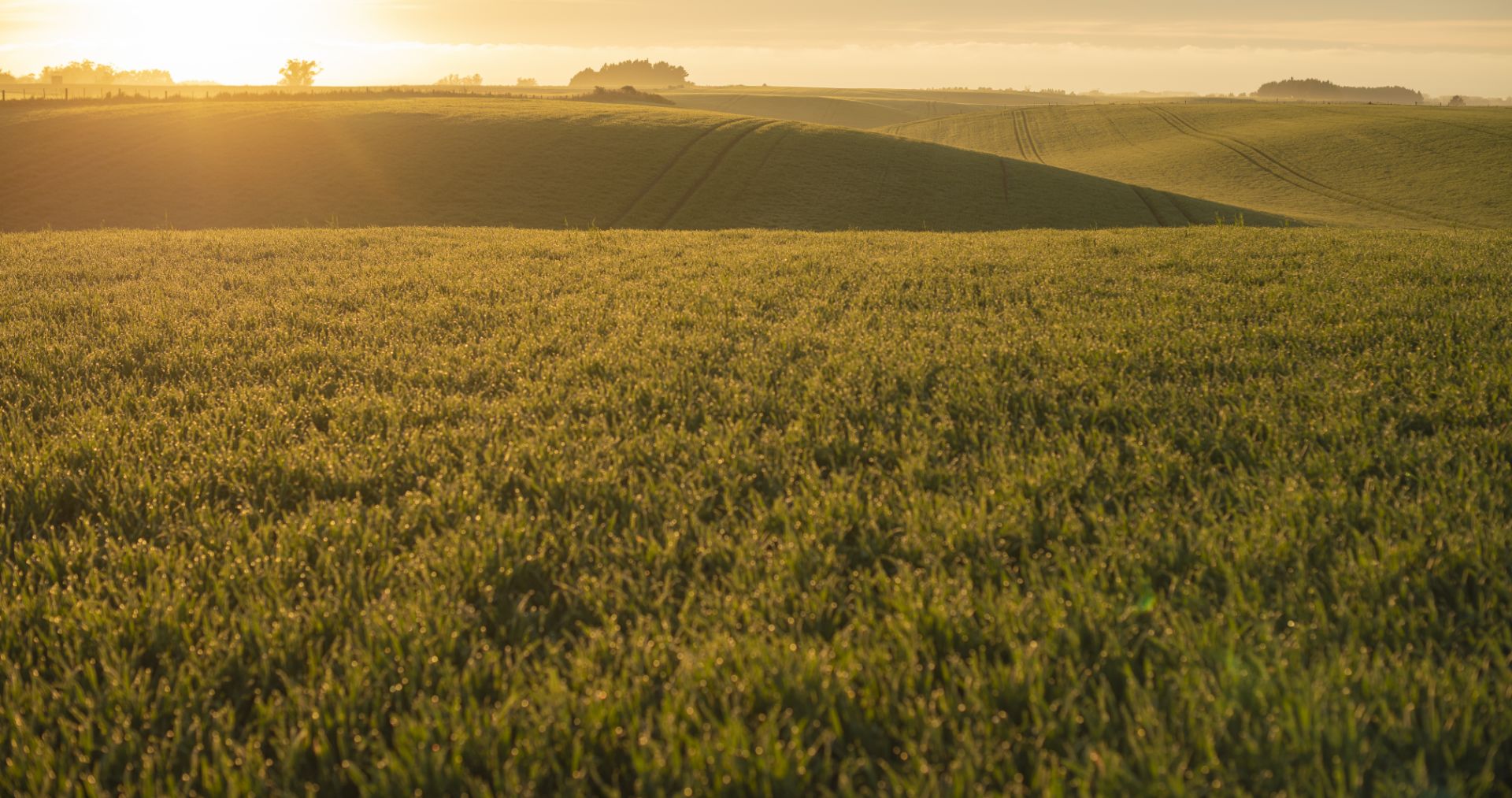
The Darling family
If anyone doubts the impact Ramularia can have on barley yields, Andrew Darling and his wife Amy could set them right. In 2015 Andrew was helping his parents Warren and Joy run the Darling family farm at Timaru in South Canterbury when they set a new world record for barley yield: 13.8 t/ha. The following year the same “recipe” – the same combination of inputs on the same variety – couldn’t get the yield any higher than 9 tonnes.
“We had a suspicion even in the record year of Ramularia coming in late,” Andrew says. “That was when we first noticed we may have an issue.
“The next season Ramularia did become a big problem and the yields were down 30 to 40%.”
Leaf analysis confirmed the Darlings’ problem was Ramularia. Once that was established, the big issue became finding a better way to control it.
Andrew and Amy are now running the operation and every crop across the 500 hectares must prove its value in a diverse rotation. The main crops are feed wheat and barley, oilseed rape and turf grass seed production plus some beans and sunflowers. It’s high-cost, high-input farming, so the reduced yields they were harvesting for several years made barley a marginal proposition.
That’s not the case anymore.
“Using Revystar has put the barley programme well and truly back into our operation,” Andrew says. This year feed barley yields are much healthier than when Ramularia was pushing them under 9 t/ha.
“We are back to averaging 11 tonnes a hectare across the entire 140 hectares of barley and that includes some more marginal areas. That’s with the same varieties, a mix of 776 and Orwell.”
The Darlings’ use of Revystar is consistent with their approach across the board: focussing on the potential upside and trying to maximise the return they get on their investment in inputs.
“We know we have to spend the money on a robust agronomic programme,” Andrew says, “and that’s where two sprays of Revystar come in. The payback is definitely there for keeping on top of disease.”
Despite natural variation in yields through drier and wetter seasons – and having dramatic weather like hail storms to contend with – knowing they can prevent outbreaks of Ramularia has made Andrew and Amy’s feed barley crops reliably profitable. “Using Revystar to manage this disease has given us back the confidence in our barley programme,” Andrew says.
BASF Technical Development Manager Grant Hagerty coordinated all the trial work leading up to the product’s launch and has kept a close eye on its commercial use since then. Based on all that experience, he is a great advocate for using Revystar in the T2 application window as the ‘king hit’ against Ramularia.
In autumn barley, Grant says the optimal timings are T1 (growth stages 31 to 33) and T2 (growth stages 49 to 59). For spring barley, Revystar can be used at T1 if the disease pressure is high, but Andrew applies it at T2 and uses the second spray at T3. He says they’ve noticed that a bit of Ramularia developing later in the season doesn’t limit yield as much as infection through those crucial earlier stages.
Revystar is definitely now the key product in the Darlings’ foliar fungicide rotation on barley, and Andrew thinks that will be the case for the foreseeable future. “Until we have cultivars that are resistant to Ramularia,” he says, “we see a strong fit for Revystar.”
Andrew Darling and Colin Dunstan

